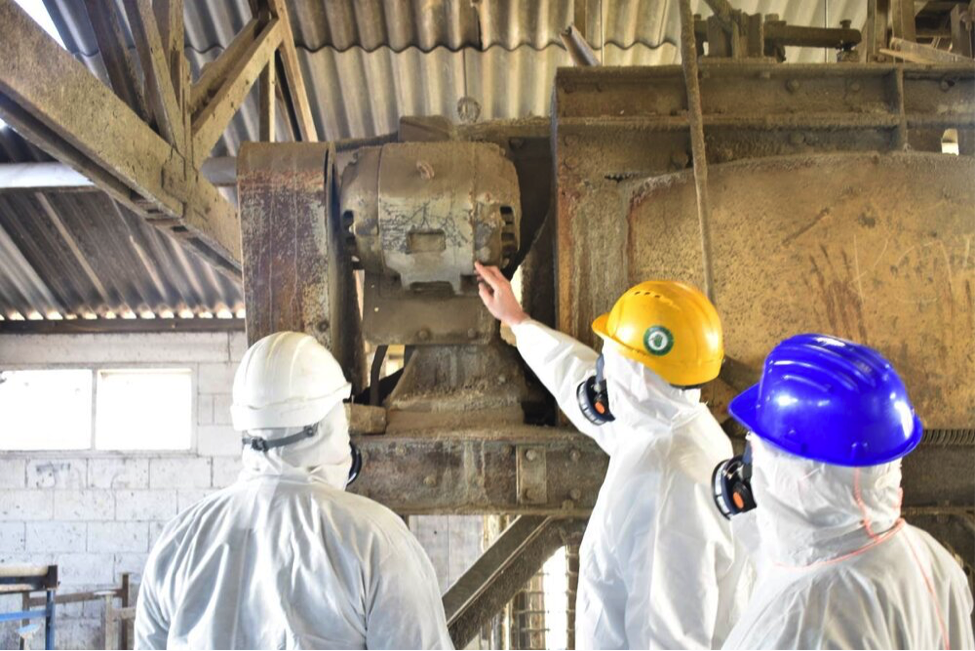Do you have asbestos in your home? Here's how you can remove it!

Does your house have asbestos in its building structure? Asbestos can be found in the following parts of a house:
- Smoke pipes
- drainage
- Cement foil
- canopy
- Gutters
- Flexible building panels
- siding
- Shingles
- Floor tiles
The only way to be sure if the structures in your home contain asbestos is to have them tested by a qualified laboratory. The EPA recommends testing residential structures only if they are damaged (crumbling or fraying) or if you intend to renovate certain parts of your home that will disrupt the asbestos materials. To find out how to choose a quality asbestos remover, Continue reading this blog.
Health effects of asbestos
Asbestos fibers are only harmful if they are inhaled by humans after they have been released into the air. When the asbestos fibers are released into the air, they break down into smaller particles. The particles in the air are then inhaled by the residents of the house. The asbestos particles collect in the lungs and cause inflammation and scarring on the walls of the lungs. Asbestos has been classified as carcinogenic by several U.S. health organizations such as the American Cancer Society and the Environmental Protection Agency. Prolonged exposure to asbestos increases the risk of developing the following conditions:
- Lung cancer
- Asbestosis – permanent lung damage from asbestos
- Mesothelioma – a type of cancer that develops along the lining of the stomach and chest
- Pleural effusions – a condition in which fluids collect in the lungs
- Cancer of the throat, kidney and gastrointestinal tract
Choosing a high quality asbestos remover
To avoid the deadly and painful health risks of asbestos, you need to know how to choose a good asbestos remover. However, if the materials of the building structure are intact and in good condition, we recommend leaving them alone. Disruption of the asbestos structures can cause the harmful fibers to be released into the air, putting you and your family at higher health risks. Aside from residential buildings, there are professions that are at high risk of asbestos exposure. They include:
- Railway construction
- Fabric milling
- Building demolition
- Sea service and shipbuilding
- Manufacture of plastics, floors, rubber or chemicals
- Asbestos mining and grinding
Due to the dangerous nature of asbestos, we do not recommend removing asbestos from your property yourself. We recommend that you use the services of a company that specializes in asbestos removal. Asbestos removal companies have staff who are experts in handling asbestos who remove the risky fibers from your property without exposing you or your family to the asbestos. How do you choose a professional and experienced asbestos removal company? There are three important things to consider. They include:
In-depth research
By doing in-depth research, you can find and use the best asbestos removal services in your area. You can do the research by searching Google for asbestos removal companies in your area. Communicating with your friends and relatives about your asbestos problem can also help you find great asbestos removal services through referrals, especially if your employees have had and solved similar problems. Make sure to use the services of a company that has been licensed and approved by the government.
Removal methods
Once you've found quality asbestos removal services, find out what methods are used to remove asbestos from structures. If the removal methods are not specified on their websites, you have the right to request the information as a potential customer. If the company does not use safe and modern methods of asbestos removal and disposal, then do not use their services. Some of the regulations that govern asbestos removal and disposal include:
- Assessment of the work area and sealing with vacuum units and plastic sheeting to prevent the surrounding area from being contaminated by the asbestos fibers.
- Workers removing the asbestos materials should wear protective equipment, including P-100 or N-100 respirators.
- All HVAC systems in the building must be disabled to prevent the asbestos fibers from circulating into the rest of the property.
- HEPA vacuums and wet wipes must be used to clean surfaces with asbestos fibers.
- The asbestos waste removed from the building structure must not be disposed of near your property. The waste should be wetted and then placed in 6 millimeter plastic bags, which should then be enclosed in plastic containers with leak-proof lids and labeled accordingly.
- Waste containing asbestos should be disposed of in designated landfills designated by the government to receive the waste.




